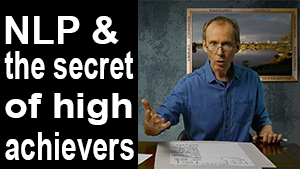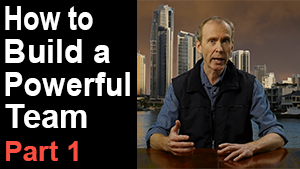
Dealing with problem drinking, marijuana, cigarettes, gambling, binge eating and food cravings is easy when you know how. Phone 07 5562 5718 or send Abby an email to book a free 20 minute telephone or Skype session and learn the secrets of flow science, NLP Hypnotherapy Gold Coast, Robina Qld... Neuro Linguistic Programming - online sessions available.
How to get into Flow and Improve Your Performance and Productivity - and Quit Marijuana, Alcohol, Gambling and Banish Food Cravings
By Abby Eagle (2018)
Have you ever wondered why some people smoke cigarettes, marijuana, drink alcohol and use other types of drugs? Why some people gamble? And why some people crave food and binge eat? And why some suffer with negative emotions like depression, anxiety and anger?
There are lots of theories on this and lots of ways to make positive change but what I want to do today is give you a new understanding. You see, in general people gamble, smoke cigarettes, marijuana, drink alcohol, eat chocolate and binge eat because they are trying to suppress and medicate a negative emotion like boredom, loneliness, stress and anxiety. On the other hand they are trying to bring in a positive feeling like confidence and relaxation into their life. In some cases they are trying to give themselves something like love or nurturance. So the bad habit has a positive intention –that is it serves them in some way.
The key element is that people are trying to change their state. My understanding is that they are trying to get themselves into a flow state – otherwise known as the zone. Steven Kotler, author of Rise of Superman, defines flow as an optimal state of consciousness in which you perform at your best.
Let’s just repeat that. Flow is an optimal state of consciousness in which you perform at your best.
Just think about that for a moment. What are people trying to do when they smoke cigarettes and marijuana, use drugs and alcohol, eat chocolate and binge eat, and gamble? They are trying to change their consciousness – they want to feel good – they want to get into a flow state so that they can perform at a higher level.
If you would like to increase your performance and your productivity read on. There are seven key areas:
1. Present State to Desired Outcome Model
2. Personality Type
3. Passion, Interest, Environment and Diet
4. Purpose
5. Flow stages
6. Intention – Attention – Task – Focus – Concentrate
7. Questions / Statements / Commands
1. Present State to Desired Outcome Model
We always start with the present state – this is where you are now. It is a good idea to spend a bit of time describing the present situation and what may have contributed to it – but don’t spend too much time analysing it. Just remember if you ask why about the present state you will get a list of becauses – which in some cases may actually reinforce the problem.
Instead you should shift your attention across to the desired outcome – and ask questions like – what do you want? That is, what will your desired outcome look like, sound like and feel like? You then contextualise it by asking – when do you want the outcome? – where do you want the outcome? – with whom do you want the outcome? And then you ask why do you want the outcome? This gives you the values and the motivation to take action.
The next step is the how? – and there are a whole series of steps in the how which lead you from the present state to the desired outcome. At some point you make a decision and then commit to that decision.
2. Personality Type
And before you get too far into taking action you need to look at your personality type. Have you heard of the Myers Briggs personality profile? There are four dimensions:
1. Introversion / Extroversion.
2. Intuition / Sensing.
3. Thinking / Feeling.
4. Judger / Perceiver.
There is also a fifth dimension to personality type and temperament which is taken as a given and that is IQ. IQ measures the ability to work with abstractions and solve complex problems.
Now what Roger Hamilton did was take the dimensions of introversion / extroversion and intuition / sensing and put them at 90 degrees to each other and then draw a square. I have already done a video on this so I won’t go into detail here. If you want to take the Wealth Dynamics Profile click on this link.
Briefly there are 8 personality types. There are similarities and differences between them. In a successful organisation you will find an appropriate mix of personality types that attend to each aspect of the business. If you are self employed then you are in trouble because you are going to find yourself constantly changing hats which is going to knock you out of flow and affect your performance. This is why meetups are so popular – because smart people know they need to connect with the right people. I can’t emphasise that enough – do what you are good at – and then team up with the right people to take care of everything else.
I believe you can never learn enough about your personality type because this is your genius. I am sure you would find that some things come naturally to you and some things are a challenge. You would also find that there are some environments in which you wither yet other environments in which you flourish.
According to Roger Hamilton you start by identifing your personality type then you take a look at your passions and interests, and then you look at your purpose - otherwise known as values.
3. Passion, Interests, Environment and Diet
Knowing your personality type means that you know which hat to put on. Knowing what interests you – and what you are passionate about means that you can put yourself in an environment in which you flourish. Now environment could be location in the world; it also means the type of people and activities and conversations which engage your attention.
You also need to keep in mind the importance of eating a diet which supports the optimum health of the mind and body.
4. Purpose
But then there has to be a purpose to all of this – a big reason why? To get your why you elicit values by asking questions like, why is that important to you? Why else is that important to you? And you can also ask - so once you get that value then what will that allow you to get and to have – and what will that mean to you? So once you map out the values and the meaning you understand what motivates you. This gives you a reason for jumping out of bed in the morning.
5. Stages of Flow
So now we get to flow. Steven Kotler tells us that there are four stages to flow.
1. Struggle.
2. Relax and let go.
3. Flow.
4. Learning and consolidation.
Everything starts with struggle. The more that you are working to your personality type - and following your passion and purpose in an environment in which you flourish then the easier it will be to get into flow. Kotler gives the example of Einstein working on a project. He would push it as far as he could then he would take a break – and go play the fiddle in the kitchen. In this process brain waves shift from beta down to alpha – he relaxes – then there are bursts of theta and he has an ah-ha experience – E equals MC squared and he rushes back to his lab.
So we start with struggle. If the task is too small the result will be boredom. If the task is too challenging it will create stress and anxiety. So the task needs to be just enough of a stretch to make your senses come alive. At appropriate times you need to take a break and then get back into the activity. When I am working on an idea I will work away at my computer until I feel a bit stuck. So I go lie down on my bed for a couple of minutes. Then in the cinema of my mind there is a free flow of imagery and internal dialogue. I get up quickly and rush back to my computer. Other times I go for a walk or take a shower. I’m in the shower – the idea comes to me – and I need to dry off as fast as I can so that I can write down the idea before it fades away.
The fourth stage which is learning and consolidation occurs in delta sleep which means you need to get a good night sleep. Flow chemicals – norepinephrine, dopamine, anandamide, endorphins and serotonin. are expensive to produce which is why it is important to eat a nutrient dense diet.
For some people being in between flow states may feel horrible – like feeling bored and listless – and empty – even feeling depressed. This is where people may resort to drugs, alcohol, gambling, junk food and even anger as a way to give themselves the feeling that they get when in flow.
6. Intention – Attention – Task – Focus – Concentrate
The answer is to set yourself a goal using the present state to desired outcome model and then commit to it. So you set an intention which drives your attention onto the task at hand such that you can focus in and concentrate. You should memorise this: you set an intention which drives your attention onto the task at hand such that you can focus in and concentrate.
When you focus in you are saying no to everything else and saying yes to your activity. As you concentrate in you find yourself dropping down into the depths of flow. In flow, time disappears as does the internal critical voice.
7. Questions / Statements / Commands
The last bit to this presentation is the use of questions, statements and commands. You might think – what am I going to do today? Thoughts arise in the mind – I could do this, this or this. These are statements. Then you might ask yourself – which one of those activities should I choose? You might wonder about that for a while until you give yourself a command and say – choose one. You then give a command and say – okay go do that now.
It is the quality of your thought processes that will determine the quality of your outcomes. So what questions do you need to ask? What statements do you need to make – and what commands do you need to give to yourself to make the changes that you need to make such that you can then climb to the top of the success ladder?
Summary
To reiterate – there are seven key areas that need to be considered if you want to improve your performance, productivity and profitability.
1. Present State to Desired Outcome Model.
2. Personality Type.
3. Passion / Interest.
4. Purpose.
5. Flow stages.
6. Intention – Attention – Task – Focus – Concentrate.
7. Questions / Statements / Commands.
What gets in the way?
There are a number of behavioural problems that are related to the desire to get into flow and achieve a desired outcome. Gambling, cigarettes, marijuana, drugs, alcohol, over eating and binge eating. We could add anxiety and anger to that list.
Time to do a cost analysis
If you have suffered from any of those problems then what have they cost you in terms of:
- your health?
- your relationships?
- your career?
- your business profitability?
- and money?
So time to grab a pen and paper and do some sobering calculations. What have each of those problems cost you over the last ten years? Write down those figures.
What have each of those problems cost you over the last 12 months? Write down those figures.
Now we turn to the future. If you continue along the same path what will those same problems cost you over the next 12 months? Write down those figures.
If you continue along the same path what will those problems cost you over the next 10 years? Write down those figures.
What would you be willing to pay to deal with those problems once and for all? Write down that figure. This is the investment that you need to make in yourself. This is different for each person.
The next question is – are you ready to make a decision to deal with those problems and bring in your future self – the new you? Write down your answer.
The next question. Are you committed to dealing with those problems once and for all? Write down your answer.
If you are ready to make some changes then take action right now and contact me either by phone or email. The phone number is on the banner image and the contact form is at the top right of this page. Talk to you soon.
Acknowledgements: see the bibliography.
Share With Friends
| DISCUSSION GROUPS | |
|---|---|
 |
|
| NLP Future Selfing | |
| NLP, Hypnotherapy & Meditation | |
| NLP Peace Mapping | |
| Facebook Discussion Group | |
| The secret of high achievers |
|---|
 |
| How to build a powerful team |
 |
| Learn the NLP Meta Model |
 |
| How I stopped drinking alcohol. |
 |
| How to coach yourself using NLP. |
 |



